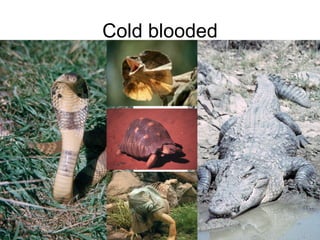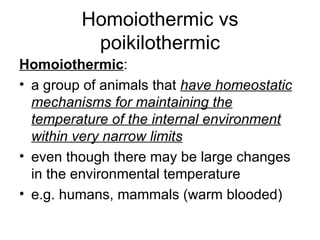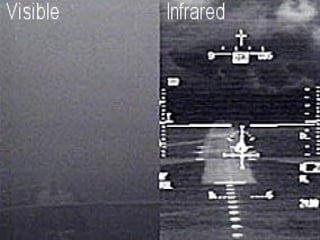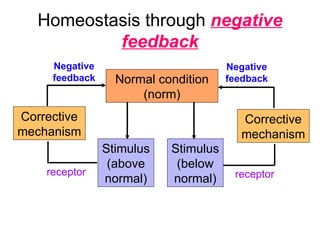Chapter 12 Homeostasis Lesson 1 - The Need for Homeostasis
- 1. Homeostasis Chapter 12 Lesson 1
- 2. Scenario: While on the way home, Steven got caught in the rain. By the time he got home, he was totally wet and shivering from the cold winds. By midnight he was running a high fever of 40ºC. His mother sent him to the hospital. Qn : Why is it risky when we run high temperatures?
- 3. Homeostasis Definition: Homeostasis is the physiological process by which the internal systems of the body (e.g. blood pressure, body temperature, acid-base balance) are maintained at equilibrium despite variations in the external conditions
- 4. Need for homeostasis Enzymatic chemical reactions in cells sensitive to changes in pH + temperature + water potential drastic changes in composition of blood/surrounding tissue fluid will affect reactions in body
- 5. Warm blooded vs Cold blooded animals
- 6. Warm blooded
- 7. Cold blooded
- 8. Homoiothermic vs poikilothermic Homoiothermic : a group of animals that have homeostatic mechanisms for maintaining the temperature of the internal environment within very narrow limits even though there may be large changes in the environmental temperature e.g. humans, mammals (warm blooded)
- 9. Poikilothermic : group of organisms that have NOT developed mechanisms for regulating the temperature of their internal environment their internal temperature therefore changes with temperature changes in the external environment e.g. lizards & snakes (cold blooded) Homoiothermic vs poikilothermic
- 10. IR images of warm blooded animals
- 11. IR images of cold blooded animals
- 13. Homeostatic mechanisms Stimulus (change in internal environment) Detected by receptor Self regulatory corrective mechanism Negative feedback Normal condition (norm)
- 14. 1) Negative feedback Definition Negative feedback occurs when the output of a system acts to oppose changes to the input of the system e.g. the regulation of hormone synthesis, blood glucose levels, body temperature
- 15. Homeostasis through negative feedback Normal condition (norm) Stimulus (above normal) Stimulus (below normal) Negative feedback Negative feedback Corrective mechanism Corrective mechanism receptor receptor
- 16. Another type of feedback called 2) Positive feedback Definition Positive feedback is a feedback loop system in which the system responds to perturbation (a small change in the physical system) in the same direction as the perturbation e.g. the process of blood clotting . The loop is initiated when injured tissue releases signal chemicals that activate platelets in the blood. An activated platelet releases chemicals to activate more platelets, causing a rapid cascade and the formation of a blood clot Lactation involves positive feedback so that the more the baby suckles, the more milk is produced The onset of contractions in childbirth. When contraction occurs, oxytocin is released into the body stimulating more contractions. Thus, the result is an increased amplitude and frequency of contractions















